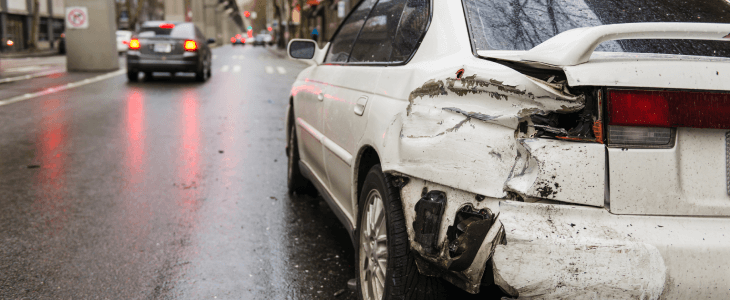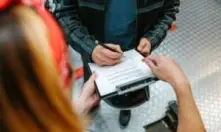How To Handle A Hit-and-Run Case With The Help Of An Accident Lawyer
How to Handle a Hit-and-Run Case with the Help of an Accident Lawyer
Related Articles: How to Handle a Hit-and-Run Case with the Help of an Accident Lawyer
- How Accident Lawyers Secure The Best Settlements: A Deep Dive Into Negotiation Strategies
- Why You Shouldn’t Delay Contacting An Accident Lawyer
- How Accident Lawyers Help In Wrongful Death Cases After A Car Crash
- How Accident Lawyers Fight For Maximum Compensation: A Deep Dive
- Why Accident Lawyers Are Essential For Severe Injuries
Introduction
Get ready to uncover fascinating insights about How to Handle a Hit-and-Run Case with the Help of an Accident Lawyer. Through this article, we aim to engage, inform, and inspire you with comprehensive information and practical perspectives.
Video about How to Handle a Hit-and-Run Case with the Help of an Accident Lawyer
How to Handle a Hit-and-Run Case with the Help of an Accident Lawyer

Being involved in a hit-and-run accident is a traumatic experience. Not only do you have to deal with the physical and emotional consequences of the accident itself, but you’re also left with the added burden of navigating a complex legal process without the cooperation of the at-fault driver. This is where the expertise of an accident lawyer becomes invaluable. This article details the steps you should take following a hit-and-run and explains how a skilled attorney can significantly improve your chances of securing compensation for your losses.
1. Immediate Actions After a Hit-and-Run Accident:
The immediate aftermath of a hit-and-run is crucial. Your actions in these initial moments can significantly impact the success of any subsequent legal claim. First and foremost, prioritize your safety and the safety of anyone else involved. If you’re injured, call emergency services immediately (911 in the US). Even if your injuries seem minor, seek medical attention. Hidden injuries can manifest later, and a documented medical history is essential for your claim.
While waiting for emergency responders, if it’s safe to do so, gather as much information as possible about the incident. This includes:
- The location: Note the exact street address, cross streets, and any nearby landmarks. Take photos or videos if possible.
- Witness information: If there are any witnesses, obtain their names, phone numbers, and addresses. Ask them to write down a brief statement describing what they saw.
- Vehicle description: Try to remember as many details as possible about the fleeing vehicle: make, model, color, license plate number (even partial information is helpful), and any distinguishing features (dents, stickers, etc.).
- Photos and videos: Take pictures of your vehicle’s damage, the accident scene, and any visible injuries. If possible, record a short video describing the events.

2. Reporting the Hit-and-Run to the Authorities:
Reporting the hit-and-run to the police is absolutely essential. The police report will serve as crucial evidence in your case. Provide them with all the information you gathered at the scene. Be accurate and detailed in your account of the events. Even seemingly insignificant details could be important later on. The police will investigate the incident, potentially using security camera footage, witness testimonies, and other investigative techniques to identify the at-fault driver.
3. Seeking Medical Attention and Documentation:
As mentioned earlier, seeking immediate medical attention is paramount. Even minor injuries should be evaluated by a medical professional. Thorough medical documentation is vital for establishing the extent of your injuries and linking them directly to the accident. Keep all medical records, bills, and receipts related to your treatment.
4. Contacting an Experienced Accident Lawyer:
Contacting an accident lawyer as soon as possible is one of the most important steps you can take. An experienced attorney specializing in hit-and-run cases understands the complexities of these situations and can guide you through the legal process. They will:
- Investigate the accident: They will conduct their own investigation, potentially gathering additional evidence not obtained by the police. This might include interviewing witnesses, obtaining security camera footage from nearby businesses, and analyzing accident reconstruction data.
- Handle communication with insurance companies: They will act as your advocate, dealing with insurance adjusters and preventing you from making statements that could harm your claim.
- Build a strong case: They will gather all necessary evidence to build a compelling case demonstrating the other driver’s negligence and your resulting damages.
- File a claim: They will file a claim with your own insurance company (if you have uninsured/underinsured motorist coverage) and potentially pursue a lawsuit against the at-fault driver if they are identified.
5. Understanding Uninsured/Underinsured Motorist Coverage:
Many insurance policies include uninsured/underinsured motorist (UM/UIM) coverage. This coverage protects you in situations where the at-fault driver is uninsured or underinsured. Your own insurance company will handle the claim under this coverage, but having an attorney can significantly improve your chances of receiving a fair settlement. Your lawyer will negotiate with your insurance company to ensure you receive the full extent of your benefits.

6. Gathering Evidence and Documentation:
Your lawyer will assist in gathering comprehensive evidence to support your claim. This includes:
- Police report: The official police report documenting the hit-and-run incident.
- Medical records: All medical bills, treatment records, and diagnostic reports related to your injuries.
- Photos and videos: Visual evidence of the accident scene, vehicle damage, and injuries.
- Witness statements: Written or recorded statements from any witnesses who saw the accident.
- Repair estimates: Estimates for the repair of your vehicle.
- Lost wage documentation: Pay stubs, employment records, and other documentation proving lost wages due to the accident.
7. Negotiating with Insurance Companies:
Insurance companies often try to minimize payouts. Your lawyer will negotiate with your insurance company (if using UM/UIM coverage) and the at-fault driver’s insurance company (if the driver is identified) to secure a fair settlement that covers all your damages, including medical expenses, lost wages, pain and suffering, property damage, and other related costs.
8. Pursuing Legal Action if Necessary:
If negotiations fail to produce a satisfactory settlement, your lawyer can file a lawsuit against the at-fault driver to recover compensation through the court system. This involves filing a complaint, engaging in discovery (gathering evidence from both sides), and potentially going to trial.
9. The Importance of Timely Action:
Statutes of limitations exist for filing personal injury lawsuits. These vary by state, but they generally impose deadlines for initiating legal action. Delaying the process can jeopardize your ability to recover compensation. Contacting an accident lawyer promptly is crucial to ensure your rights are protected and your claim is filed within the applicable timeframe.
Frequently Asked Questions (FAQ):
-
Q: What if I don’t have uninsured/underinsured motorist coverage?
- A: Your options are more limited without UM/UIM coverage. You might still be able to pursue a claim against the at-fault driver if they are identified, but recovering compensation can be significantly more challenging.
-
Q: How much will a lawyer cost?
- A: Many accident lawyers work on a contingency fee basis, meaning they only get paid if they win your case. The fee is typically a percentage of the settlement or judgment.
-
Q: How long will the legal process take?
- A: The duration of the legal process varies depending on the complexity of the case and the cooperation of all parties involved. It can range from several months to several years.
-
Q: What if the at-fault driver is never identified?
- A: If the at-fault driver remains unidentified, your chances of recovering compensation are significantly reduced. However, you can still file a claim under your UM/UIM coverage if you have it.
-
Q: What kind of damages can I recover?
- A: You can recover damages for various losses, including medical expenses, lost wages, pain and suffering, property damage, and emotional distress.
-
Q: Do I need a lawyer if my injuries are minor?
- A: Even minor injuries can lead to significant medical bills and lost wages. An attorney can help you navigate the legal process and ensure you receive fair compensation.
-
Q: Can I settle my case without a lawyer?
- A: You can, but it’s strongly discouraged. Insurance companies are skilled negotiators and often try to minimize payouts. A lawyer protects your rights and ensures you receive a fair settlement.
-
Q: How do I find a good accident lawyer?
- A: Ask for referrals from friends, family, or your doctor. You can also search online for lawyers specializing in personal injury and read client reviews. Consult with several lawyers before making a decision.
Remember, dealing with a hit-and-run accident is a challenging situation. Seeking the help of an experienced accident lawyer is crucial for protecting your rights and maximizing your chances of receiving fair compensation for your losses. Don’t hesitate to contact a legal professional immediately after the incident.
Closure
We hope this article has enriched your understanding of How to Handle a Hit-and-Run Case with the Help of an Accident Lawyer. We are grateful for your time and curiosity. See you in our upcoming discussions!



